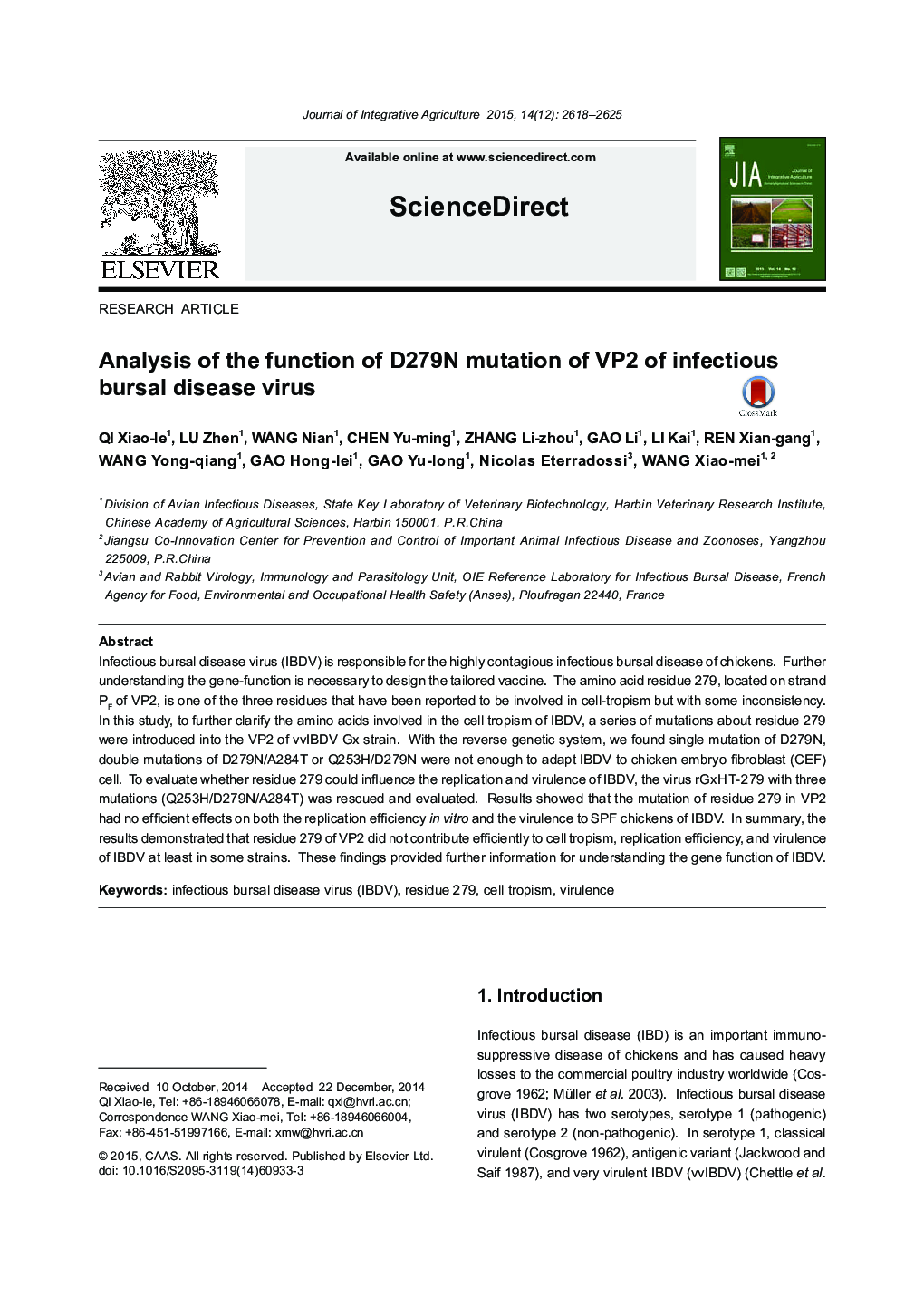| Article ID | Journal | Published Year | Pages | File Type |
|---|---|---|---|---|
| 4494151 | Journal of Integrative Agriculture | 2015 | 8 Pages |
Infectious bursal disease virus (IBDV) is responsible for the highly contagious infectious bursal disease of chickens. Further understanding the gene-function is necessary to design the tailored vaccine. The amino acid residue 279, located on strand PF of VP2, is one of the three residues that have been reported to be involved in cell-tropism but with some inconsistency. In this study, to further clarify the amino acids involved in the cell tropism of IBDV, a series of mutations about residue 279 were introduced into the VP2 of vvIBDV Gx strain. With the reverse genetic system, we found single mutation of D279N, double mutations of D279N/A284T or Q253H/D279N were not enough to adapt IBDV to chicken embryo fibroblast (CEF) cell. To evaluate whether residue 279 could influence the replication and virulence of IBDV, the virus rGxHT-279 with three mutations (Q253H/D279N/A284T) was rescued and evaluated. Results showed that the mutation of residue 279 in VP2 had no efficient effects on both the replication efficiency in vitro and the virulence to SPF chickens of IBDV. In summary, the results demonstrated that residue 279 of VP2 did not contribute efficiently to cell tropism, replication efficiency, and virulence of IBDV at least in some strains. These findings provided further information for understanding the gene function of IBDV.
